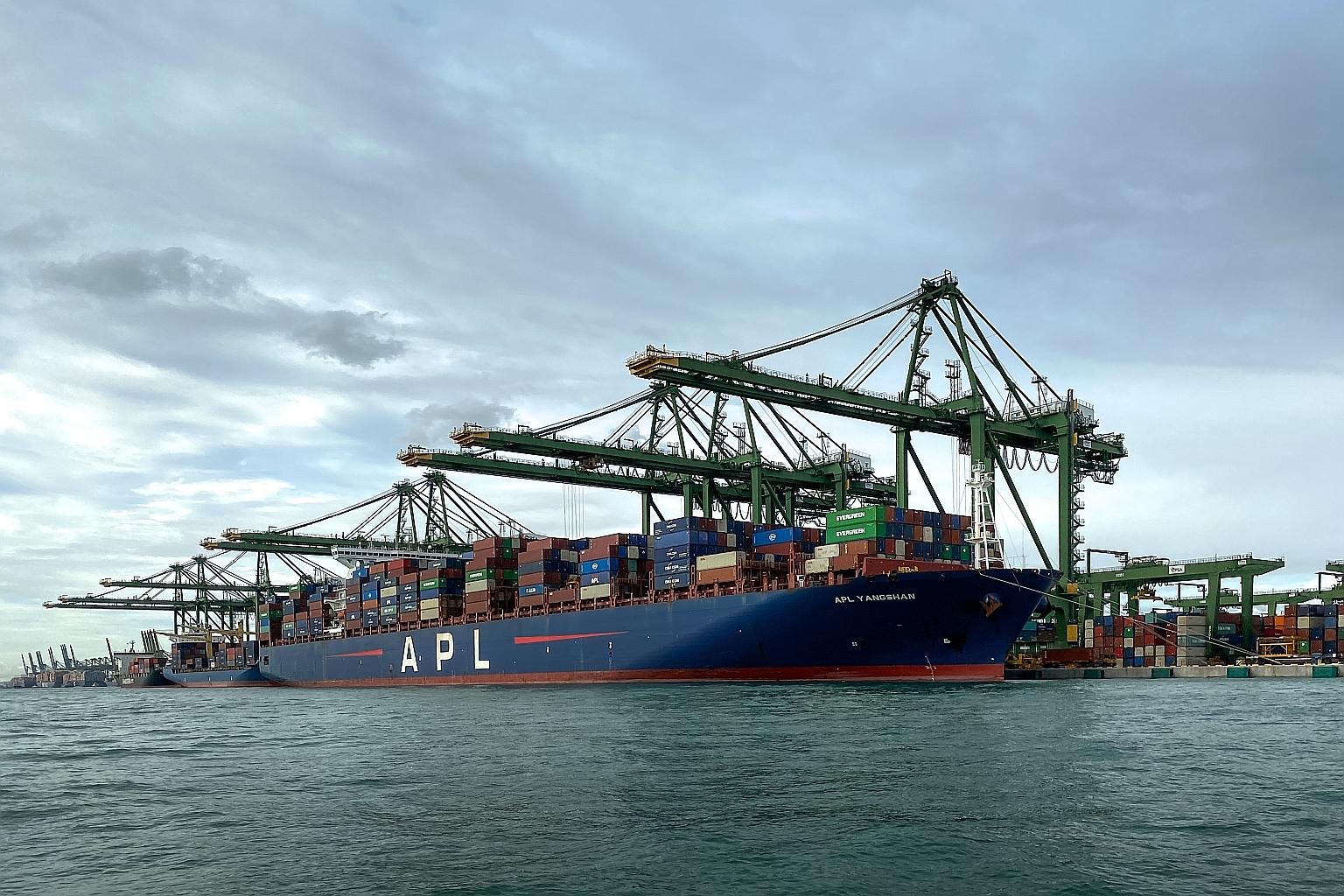Longer wait at Singapore port amid surge in cargo volumes
Daily average number of vessels stopping for over 2 days reportedly up 60% in Jan and Feb
Sign up now: Get ST's newsletters delivered to your inbox

The longer wait time for container ships arriving to berth at Singapore's port is similar to what is happening at other key ports, owing to the sudden surge in cargo volumes fuelled by the Covid-19 pandemic. Operator PSA says it has deployed additional resources and ramped up capabilities to support the increased activity at the port.
ST PHOTO: GAVIN FOO
Follow topic:
Container ships arriving to berth at Singapore's port are facing longer wait times - in a situation seen at other key ports as well - owing to the sudden surge in cargo volumes fuelled by the Covid-19 pandemic.
Ms Ng Baoying, global managing editor for container shipping at S&P Global Platts, said that the daily average number of vessels stopping at Singapore's port for more than two days jumped over 60 per cent year on year to 47 and 52 in January and February, respectively.
The upward trend had already been observed last year as the virus outbreak spread.
Meanwhile, the turnaround time for container vessels has more than doubled to an estimated five to seven days, from a maximum of two days earlier.
A spokesman for port operator PSA said: "This exceptional situation is due to a confluence of factors, including an unprecedented and volatile surge in cargo demand, congestion across all nodes in the global supply chain (including depots, warehouses and seaports) due to renewed lockdowns, a lack of usable empty containers while laden ones are held up longer at these nodes, and shipping lines' vessel sailing schedule reliability dropping to 10-year historical lows, causing further delays at almost every seaport worldwide."
PSA said it has deployed additional resources and ramped up capabilities to support the increased activity at the Singapore port, and is working with shipping line customers and cargo owners.
As PSA observed, the situation is not unique to Singapore.
Data from IHS Markit of 23 key Northern Hemisphere ports showed average port time rose 13 per cent in the second half of last year against the same period in 2019, Joc.com reported this week. This was equivalent to an extra 3.5 hours per port call.
The ports covered included Los Angeles, Long Beach, Rotterdam, Felixstowe, Yantian and Yangshan.
The report said sudden growth in demand was one of the main catalysts for the delays, as container volumes rebounded in the second half of the year, driven by growth in spending on household goods and other equipment as people were forced to stay at home due to Covid-19 travel restrictions, plus massive purchases of medical equipment used to control the virus outbreak.
Mr Peter Sand, chief shipping analyst at industry lobby group Bimco, said that by far the largest volume growth was seen in the Far East to North America trade. On this route, volumes rose by 3.6 million TEU (twenty-foot equivalent unit) in the second half of last year compared with the first, and by 2.1 million TEU compared with the second half of 2019.
-
THE SITUATION ELSEWHERE
-
13%
Increase in average port time at 23 Northern Hemisphere ports in the second half of last year, against the same period in 2019.
3.5
Extra hours per port call.
Ms Ng said that while cargoes from Colombo and other ports reportedly diverted to Singapore have partially contributed to the congestion, Singapore's role as a key transshipment hub and a port where crew changes take place are other factors.
CTI Consultancy director Andy Lane said the congestion at the Singapore port is "far from being a critical situation".
Singapore also appears to be coping better than other ports, and has a greater ability to flex capacity to meet peak demands as needed, he said.
PSA did not say when it expects that the congestion here will be resolved.
But its unit is offering a host of value-added services including priority discharge, top stowage, express delivery and timely updates in response to the situation.
THE BUSINESS TIMES

